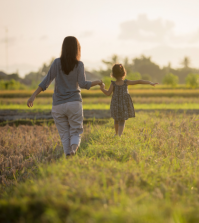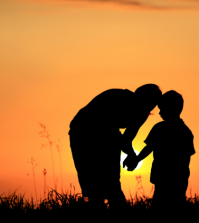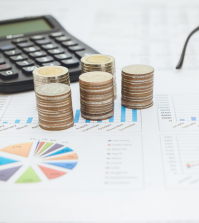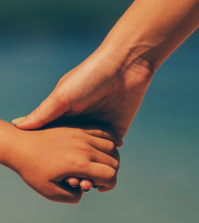- Learning to appreciate the ‘slow’Posted 15 hours ago
- A Mother’s Journey Through Parenthood and AcceptancePosted 5 days ago
- How to Avoid Common Missteps in Household Money ManagementPosted 2 weeks ago
- Mothering in a Fractured TimePosted 3 weeks ago
- Beneath the Surface: Revealing Life’s Goals nurtured from a Spiritual SeedPosted 4 weeks ago
- How We Kept Marital Peace while Traveling the World with Our KidsPosted 1 month ago
Lifting Iron After 30
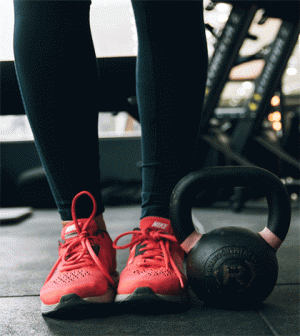
By Antonietta Mannarino
I love it when I enter an empty gym. It’s just me, lifting iron, heavy breathing and mental clarity. I love the way the metal feels against my palms or the feeling of my muscles tensing up as I push or pull to get the weight to move. Any problem I have dissipates. It becomes clear between my breaths. Things become clear and simple. My lungs open up and the feeling of chest-constriction-anxiety washes away. My bones get a poundage and I feel strong. I feel free.
I started lifting weights in my mid-twenties. At first, it was no other reason but for vanity purposes. I wanted the chiseled arms, the popping guns, the nice shaped bum and perhaps add a little extra on the front as well. I also wanted to prove to myself (and my nurse) that I could put on muscle and I that I could become an athlete. Keep in mind that the general population and the medical establishment may still have limiting beliefs for people with chronic illnesses who want to be physically active. If you have a chronic illness, you can be physically active. You just need to listen to your body more carefully.
The journey for my weightlifting began for the wrong reasons but I soon began realizing that my reasons for lifting shifted more so for my health than my physique.
I was born with a rare blood disorder that requires me to get blood transfusions every three weeks. Doctors had a grim prognosis for my parents. My parents feared the worst. I wasn’t supposed to live past 10 years old. But with the help of medical research and new medication, I was on the road to living a life that was promising…if I stuck to a strict regimen of drug adherence that required me to inject myself with a butterfly needle every night for the next thirty years or so. The drug would infuse throughout the night and would rid my body of the excess iron I would acquire through chronic transfusions. Luckily, research has granted us oral chelators to do the same job without stabbing my stomach with needles!
I always took my health seriously. Due to thalassemia, I was prone to so many other health disturbances such as hormone imbalances, osteoporosis and the risk of developing diabetes, heart and liver disease, not to mention anxiety and depression. Yes, I was diagnosed with osteopenia in my left hip and the beginning of osteoporosis in my lower spine in my late twenties. So you can see why staying healthy was and still is of optimum importance to me. I eat clean and exercise regularly which includes lifting weights. Having a chronic illness is no excuse for being benched and not doing my share to better my quality of life.
What most women don’t realize is that we start losing muscle after the age of 30. This is what is known as sarcopenia. Inactive people tend to lose about 3-5% of their muscle mass per decade.webmd.com. Our bones also begin to lose their density as we age. In fact, rapid bone loss in women begins in the first few years after entering menopause (NIH GOV, 2015). This is a recipe for disaster if we do not take a proactive role! As we get older, this loss of bone and muscles can mean suffering fractures in the advent of a fall, being bedridden, reduced mobility and a deteriorated quality of life.
With my prognosis of developing severe osteoporosis, I knew I had to do my part in slowing down this disease or ideally, reverse it! The research for weight training and strengthening bones was not evident when I first started lifting heavy after my diagnosis of osteoporosis in my late twenties. I do remember my nurse explaining to me that my bones were like that of a sixty-year-old! This angered me and fuelled me to get moving. Something inside of me clicked and I knew that it was just a matter of time that research would back up what I have been believing all these years: strength training will help increase my bone density and I can protect my bones by developing muscle around it! I knew that if I “pounded” by bones, so to speak, with lifting weights and jogging that I would make them stronger.
I began lifting heavy, sometimes for 60 minutes and other times 120 minutes. I began jogging. I continued to eat clean and made sure I supplemented with calcium and vitamin D as prescribed. Here is what has happened. My last bone density scan was last year (I am 43 years old). The results showed that my bones have gotten better! My spine has gone from mild osteoporosis to the normal range of density for my age. My hip has also gotten better. There is not a doubt in my mind that all the lifting, jogging and eating clean I have done has contributed 100% to strengthening my bones.
Research studies now support the fact that weight training 60 to 90 minutes a day does improve the density of bones in females. (NCBI, 1999)
This is the main reason why I pursue such a lifestyle. I want to walk upright at the age of 70 and still carry my own groceries. I want to be able to move about freely and be fully mobile. I want to be able to dance, walk, hike and even jog as I get older so that I can appreciate the life around me and feel freedom. I don’t want to be carrying a cane, be hunched over, be destined to a wheelchair and live in fear of falling.
For me, weight training is not about looking bulky or “manly”. It’s about the health of your entire body down to your very bones, and how it will serve you in the years to come. It’s about building quality muscle to surround your bones and protect them in the advent of a fall. Consider it as an added health insurance. Not only do you get stronger bones, but you get to develop your muscles which helps give you a nice shape to your figure. Weight training also helps build muscle that will allow you to burn calories even hours after your work out is done. Even when you’re sitting on the couch at night and unwinding! Lifting weights also gives you a sense of empowerment, and strength to carry out your daily activities. From a personal perspective, it has also helped with my anxiety. Lifting weights allowed me to breathe easier, stay in the present, and realize that problems are only as big as we make them.
So what are some of the things I cater to, to ensure strong healthy bones and musculature? Take note of what appeals to you, my friends:
- Weight train 3-5 times a week (2-3 for beginners). Please consider hiring a personal trainer if you are not familiar with lifting weights!
- Focus on exercising your legs, back and hips as these are the areas most affected by Osteoporosis (Webmd.com)
- Jog (even once a week helps!)
- Skip rope (it’s a great cardio exercise and the poundage on your feet will help. Start with 1-minute skipping 1-minute jogging in place for 10 minutes and then increase your time)
- Any type of exercise that gets you hopping and jumping on the floor (dancing counts too!)
- Boxing or kickboxing (the pounding of your fists, palms, and shins help to strengthen your bones. Check your local gym for a punching bag or a kickboxing class)
- Get your calcium and Vitamin D supplements (Check your doctor if you are due for a bone density scan and if you should be put on calcium and Vitamin D supplements. Vitamin D helps absorb calcium)
- Eat dark green, leafy vegetables (collards, cabbage, broccoli)
- Eat more of these foods (sardines with bones, salmon, okra, tofu, soya beans, nuts, soya milk fortified with Vitamin D and calcium, whole grain breads with fortified flour)
- Get out and soak in the sunshine! Get some sun exposure in short bouts for your Vitamin D dose
As empowered women, I (and I’m sure you, too!) want to live a long and active life where mobility is not compromised and we can enjoy our bodies well into our 70’s and 80’s. Taking the time to care for our bones and muscles will help us. We have nothing to lose if we weight train and everything to gain, including bone and muscle. No pun intended.
Resources:
https://www.ncbi.nlm.nih.gov/pubmed/9927006
https://www.ncbi.nlm.nih.gov/pmc/articles/PMC5403320/
https://www.bones.nih.gov/health-info/bone/osteoporosis/bone-mass
https://www.webmd.com/osteoporosis/features/weight-training#1
********
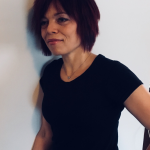 Antonietta is an author, teacher and personal trainer. She holds two Bachelors and is an avid lifelong learner. As a co-author to the new best-selling book “Simply Woman: Stories from 30 magnificent women who have risen against the odds”, Antonietta reveals her unwavering independence from a young age and how her resilience broke through the odds of living with a chronic medical condition despite her doctors’ prognosis at birth. Her life has been an active journey from studying in a Police program to embarking on a 6 day solo-hike trip in Santiago de Compostela, Spain. She lives in beautiful Vaudreuil with her two cats. Antonietta can be reached on Facebook at Anto Health & Fitness and at https://antomannarino.wixsite.com/antoniettamannarino
Antonietta is an author, teacher and personal trainer. She holds two Bachelors and is an avid lifelong learner. As a co-author to the new best-selling book “Simply Woman: Stories from 30 magnificent women who have risen against the odds”, Antonietta reveals her unwavering independence from a young age and how her resilience broke through the odds of living with a chronic medical condition despite her doctors’ prognosis at birth. Her life has been an active journey from studying in a Police program to embarking on a 6 day solo-hike trip in Santiago de Compostela, Spain. She lives in beautiful Vaudreuil with her two cats. Antonietta can be reached on Facebook at Anto Health & Fitness and at https://antomannarino.wixsite.com/antoniettamannarino


